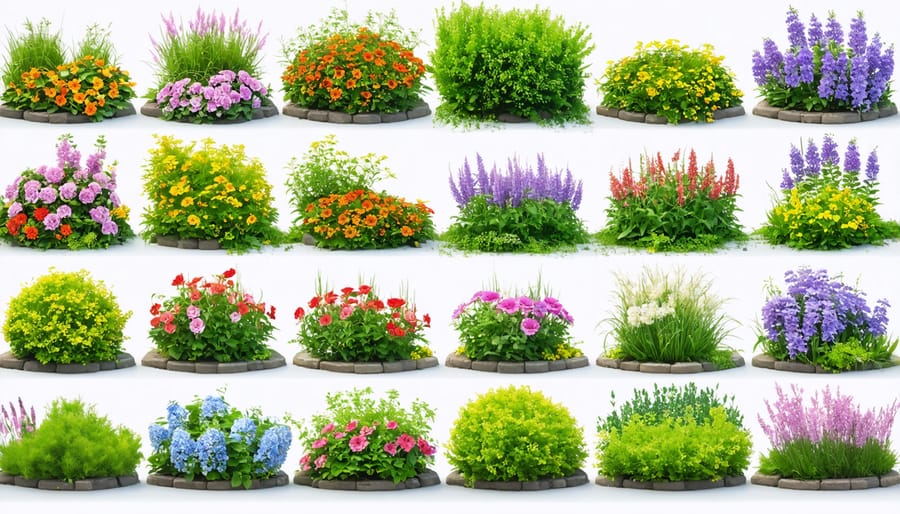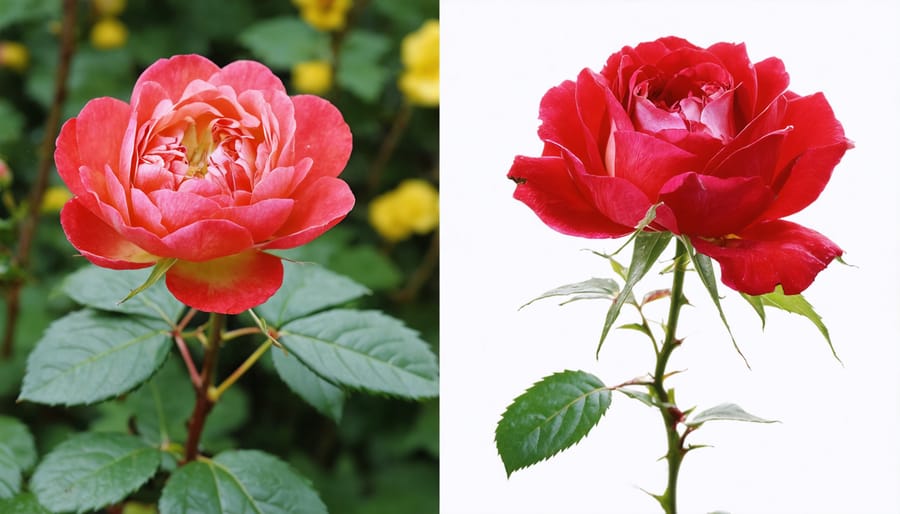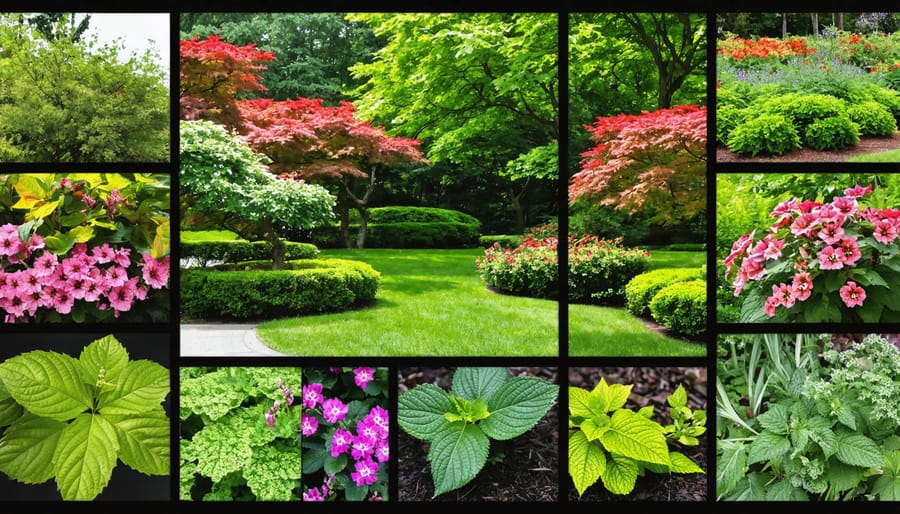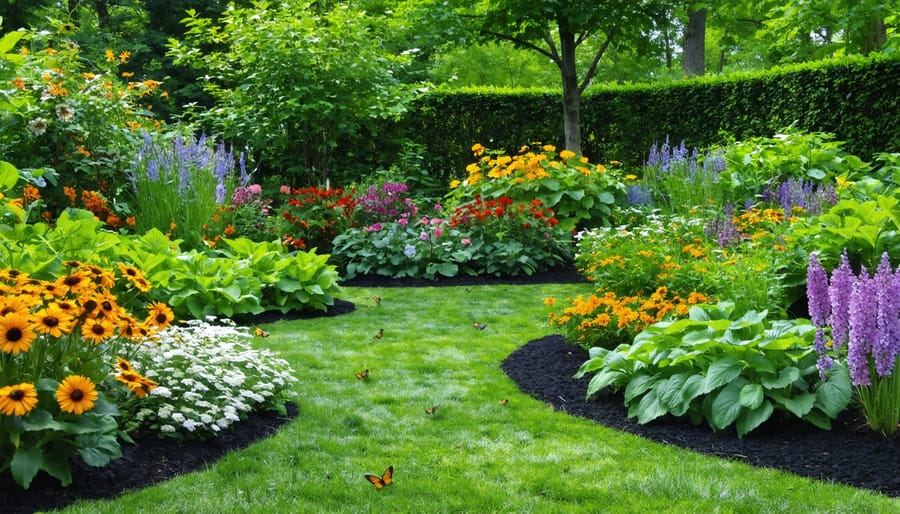Ornamental plants transform ordinary spaces into vibrant, living works of art, serving primarily for decorative purposes rather than food production or commercial use. These botanical gems, carefully selected for their aesthetic qualities, include everything from flowering perennials and ornate shrubs to striking foliage plants that grace our gardens, homes, and public spaces. Understanding what defines an ornamental plant is crucial for both home gardeners and landscape professionals, as it directly impacts plant selection, care requirements, and disease management strategies. While all plants naturally beautify their surroundings, ornamental varieties are specifically bred and cultivated for their exceptional visual appeal – whether through stunning blooms, interesting leaf patterns, unique growth habits, or seasonal color changes. This distinction shapes how we approach their cultivation, maintenance, and protection from diseases, making it essential to grasp the fundamental characteristics that set ornamental plants apart from their purely functional counterparts.
Defining Ornamental Plants
Primary Purpose: Aesthetic Value
Ornamental plants are primarily cultivated for their visual appeal and decorative qualities rather than their utility. These garden treasures transform our spaces with their stunning flowers, unique foliage patterns, interesting textures, and architectural forms. Whether it’s the bold blooms of hydrangeas gracing a garden border, the geometric symmetry of boxwood hedges, or the graceful cascade of hanging ferns on a porch, these plants are chosen specifically to enhance the aesthetic value of our surroundings.
Unlike vegetables, fruits, or herbs that serve practical purposes, ornamental varieties focus on creating visual impact and emotional connection. They’re the artists of the garden world, painting our landscapes with color throughout the seasons and bringing joy through their pure beauty. From manicured formal gardens to casual cottage-style beds, these decorative plants help create outdoor spaces that inspire, relax, and delight the senses. Their primary role is to make our world more beautiful, one garden at a time.
Common Categories of Ornamental Plants
Ornamental plants generally fall into several distinct categories, each bringing unique beauty and functionality to gardens and landscapes. Flowering plants, such as roses, lilies, and chrysanthemums, are among the most beloved common ornamental varieties, prized for their colorful blooms and seasonal displays. Shrubs, including hydrangeas and boxwood, provide structure and year-round interest while serving as excellent boundary markers or focal points.
Ornamental trees, like Japanese maples and flowering cherries, add vertical dimension and create stunning seasonal shows with their changing foliage and blossoms. Foliage plants deserve special attention for their striking leaves rather than flowers – think hostas, ferns, and colorful coleus. Many gardeners combine plants from these categories to create layered, visually appealing landscapes that offer interest throughout the year. Each category requires specific care considerations, but all contribute to the artistic and aesthetic value of outdoor spaces.

Ornamental Plants vs. Other Garden Plants
While all plants bring something special to our gardens, ornamental plants and functional garden plants serve different primary purposes. Ornamental plants are chosen mainly for their aesthetic value – their beautiful flowers, striking foliage, interesting textures, or architectural forms. Think of those lovely flowering peonies or the dramatic purple leaves of Japanese maples that catch your eye and make your heart skip a beat.
On the other hand, functional garden plants are grown primarily for practical purposes. These include vegetables like tomatoes and cucumbers, herbs for cooking and medicine, fruit trees, and ground covers for erosion control. While these plants can certainly be attractive, their main job is to provide food, medicine, or serve a specific purpose in the landscape.
That’s not to say there isn’t overlap between these categories! Many plants pull double duty. Lavender, for instance, charms us with its beautiful purple blooms while also providing fragrance and herbal benefits. Similarly, berry bushes offer both tasty fruits and seasonal visual interest with their flowers and autumn foliage.
The key difference lies in the primary reason for growing them. When selecting ornamental plants, we focus on their decorative qualities first – how they’ll enhance our garden’s beauty, create focal points, or contribute to the overall design. With functional plants, while appearance matters, we’re more concerned with their yield, nutritional value, or practical benefits to the garden ecosystem.
Disease Management Considerations

Appearance Priority
When it comes to ornamental plants, their visual appeal is not just about aesthetics – it’s a vital indicator of plant health and directly influences how we approach managing plant diseases. Garden enthusiasts often prioritize maintaining the attractive appearance of their ornamental specimens, which means catching and treating diseases early becomes crucial.
Unlike food crops where yield is the primary concern, ornamental plants are valued primarily for their decorative qualities. This shifts the focus of disease management strategies toward preserving visual elements like leaf color, flower production, and overall plant form. For instance, even minor leaf spots that might be tolerable on vegetable plants could significantly reduce an ornamental plant’s value and appeal.
This appearance-first approach often leads gardeners to implement more proactive disease prevention methods, such as careful spacing for better air circulation, strategic pruning to remove affected areas quickly, and selecting disease-resistant varieties that maintain their beauty with less intervention. Regular monitoring becomes second nature, as catching symptoms early helps preserve the plant’s ornamental value while making treatment more effective and less intensive.
Economic Value
The economic value of ornamental plants extends far beyond their aesthetic appeal. In residential settings, well-chosen ornamental plants can increase property values by up to 20%, making them a worthwhile investment for homeowners. Professional landscapers and garden centers recognize this value, often recommending specific ornamental varieties that provide the best return on investment.
In commercial settings, ornamental plants play a crucial role in creating welcoming environments that attract customers and enhance brand image. Hotels, restaurants, and office buildings regularly invest in ornamental plantings to create positive first impressions and comfortable atmospheres for visitors and employees alike.
The ornamental plant industry itself is a significant economic driver, generating billions in annual revenue worldwide. This includes not only plant sales but also related products like specialized soils, containers, and maintenance tools. The industry supports numerous jobs, from growers and wholesalers to retail garden centers and landscape maintenance professionals.
When making treatment decisions for diseased ornamental plants, their economic value often justifies more intensive care and preventive measures compared to purely functional plantings. This might include using premium pest control products or implementing comprehensive maintenance programs to protect the investment.
Understanding ornamental plants opens up a world of possibilities for your garden design and landscaping projects. These beautiful additions to our outdoor spaces serve both aesthetic and functional purposes, from creating stunning visual displays to increasing property value. Remember that successful ornamental gardening involves selecting plants suited to your climate, maintaining proper care routines, and implementing effective disease management strategies. Whether you’re starting with a few container plants or planning an elaborate garden, the key is to choose plants that bring you joy while considering their maintenance requirements. By following the guidelines we’ve discussed, you’ll be well-equipped to create and maintain a thriving ornamental garden that enhances your outdoor space and provides years of enjoyment.




